You are now on page 2. Here you can read all my findings concerning the performance of the camera (autofocus, speed) as well as information about 4K Photo, video capabilities, battery life and other features.
- Page 1: design, functionality and image quality
- Page 2: autofocus, speed, stabilisation, other features and conclusion
[toc heading_levels=”2″ label=”Table of contents – Page 2″]
Single and Continuous Autofocus
The G85 and GX85 employ the very same Depth from Defocus (DFD) contrast detection autofocus system used on all of Panasonic’s latest models. It features 49 AF points across the frame. By evaluating two images with different depths of field, DFD calculates the distance to the subject and locks onto it more quickly than standard contrast detection AF systems.
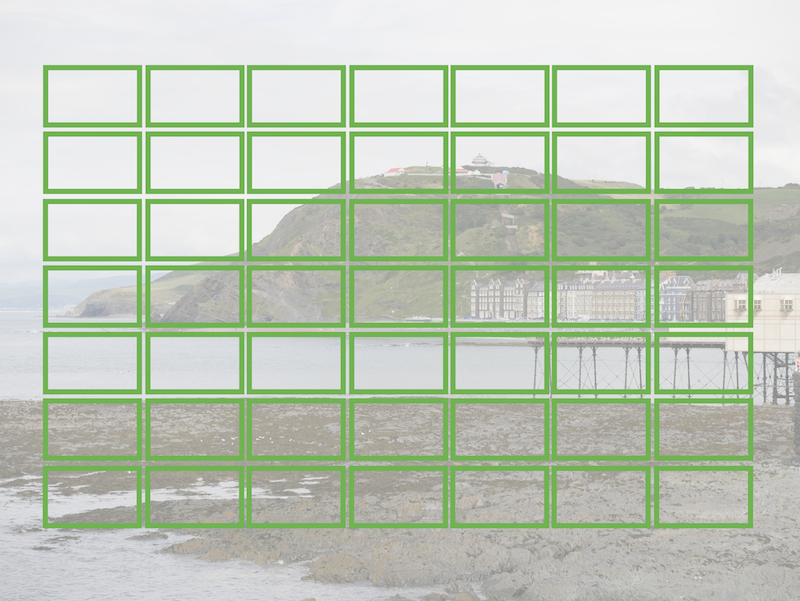
Now that all the other mirrorless brands have all switched over to a hybrid autofocus system, Panasonic can be considered the last bastion of contrast detection autofocus. While the performance is excellent in point-to-point AFS mode, the AFC leaves much to be desired for both stills and video in comparison to the competition.
For slow subjects moving in a predictable fashion, the performance is pretty good for stills on both cameras as you can see from the series of Mathieu running below.
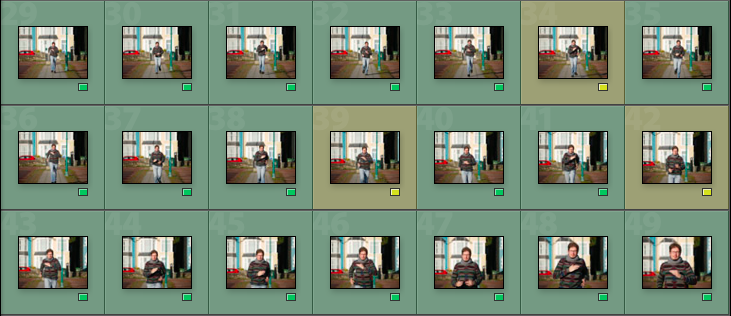
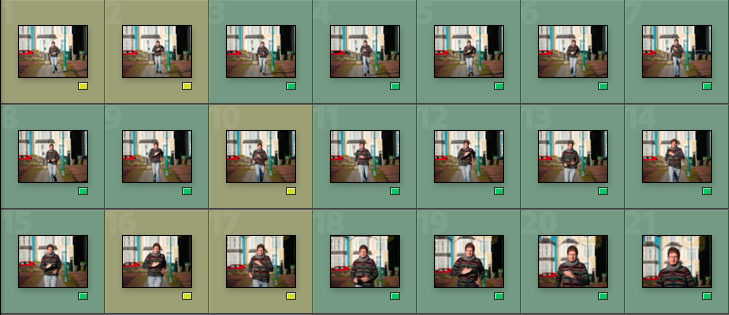
In scenes lacking contrast, Lumix cameras have the tendency to lose track of the subject, especially if it is fast or moving in an unpredictable fashion. A good example is a tern I was tracking with the G85. When the bird was against the sky, the camera had an easier time distinguishing it from the background but as soon as it touched the sea, it began to confuse it with the similarly-coloured waves.

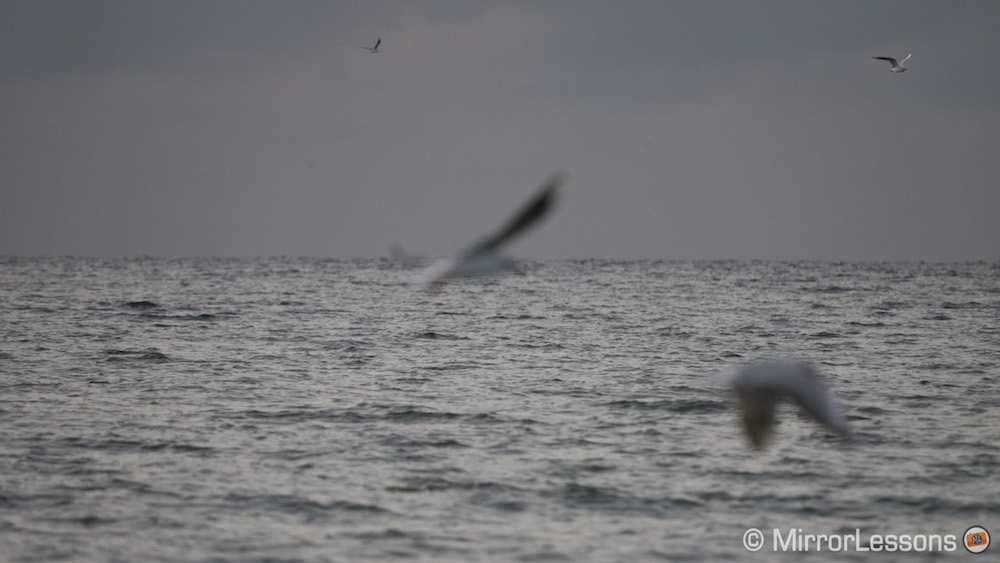
I encountered a similar situation at our local red kite sanctuary where the G85 found it less of a challenge to track the reddish-brown birds against the blue sky than when they were against the trees.

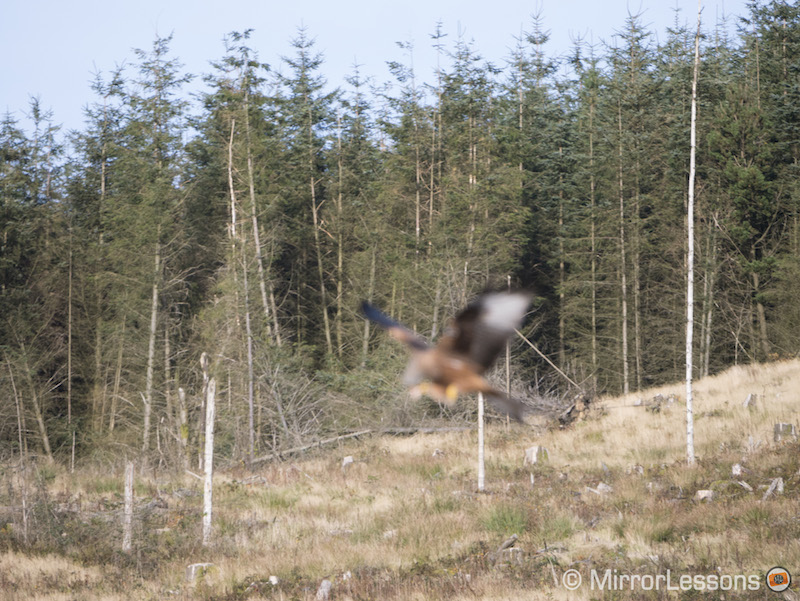
The opposite was true at a women’s soccer match we photographed. The two cameras had far less difficulty following the players, partly because their jerseys stood out against the background but also because they were moving more slowly.




Though every situation is different, my hit rate with Lumix cameras featuring DFD technology usually sits between 40-60% if there is enough contrast. With the G85, I wound up with slightly better results for action than with the GX85, not because the autofocus system is any different but because its SLR-like ergonomics are more comfortable with longer lenses and its large OLED viewfinder makes it easier to follow fast-moving subjects.
Within the AF Mode menu, there are six different options: 1-Area, Pinpoint, 49-Area, Custom Multi, Tracking and Face/Eye Detection. The first two are useful for single-point focusing, while the following third, fourth and fifth are more appropriate for groups and moving subjects.
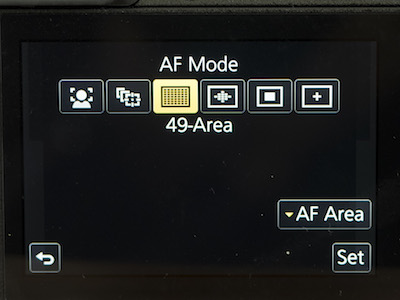
I almost always end up using 1-Area for static shots instead of Pinpoint, as I like being able to select a specific point on-screen with my finger and adjust its size according to the size of the subject. Custom Multi is my second choice because you can choose the AF points you want to activate. I rarely use 49-Area since I find it too unpredictable, and Tracking only comes in handy for slow-moving subjects moving in a predictable fashion.
As for Face/Eye Detection, I find it works well on both cameras when there is a single subject in your scene but may bounce from face to face in a crowded area. Unfortunately, there is no way of telling the camera to concentrate on a specific face, unless you activate Face Recognition as I have done below.

The G85 comes with a brand new AF option called AF Sensitivity which you can adjust on five different levels (-2, -1, 0, +1, +2). By selecting a positive value, you’re telling the camera to change focus quickly as the subject moves. By selecting a negative value, conversely, you’re telling the camera to re-adjust focus slowly and stay focused on the subject, even if an obstruction crosses its path. I used both the +2 and -2 values quite a lot during my testing period but to be honest, I didn’t notice a huge difference in performance for either stills or video.
Another small difference that concerns the AF performance is found in the Focus/Release Priority menu. On the G85, there is now the option to specify whether it applies to AFS or AFC whereas on the GX85, it cannot be specified.

Shutter Mechanism
Both the G85 and GX85 feature an all new shutter mechanism that is electromagnetically driven rather than spring driven. This allows not only for a reduction in the size of the camera body, but also a quieter shutter sound and much less shutter shock – about 90% less according to Panasonic.
In practice, it works extremely well – we no longer feel the need to switch over to the electronic shutter to avoid shutter shock as we used to with older models like the G7.
Somewhat ironically, the G85 is the first and only high-end Lumix camera to feature an additional electronic first curtain (EFC) whose very purpose is to eliminate shutter shock. (It is available on the GF7, GF8, GX850 and GM series.) It would have been a more useful addition to the G7, as it would have allowed you to shoot high quality 12-bit files whilst avoiding all shutter shock issues. (With the full electronic shutter, the maximum quality is 10-bit.)
Continuous Shooting and Buffer
There is a slight difference in continuous shooting speed in AFS, with the G85 being capable of up to 9fps versus the 8fps of the GX85. In AFC, the continuous shooting speed is capped at 6fps on both cameras, or 40fps with the electronic shutter in JPG format at 3MP of resolution. A “Live View” of your scene with blackouts through the EVF or on the LCD (as opposed to seeing the last image taken in a sequence) is only available up to 6fps on both cameras.
The official specifications suggest that the G85 has a much better buffer than the GX85. To test this, I slotted the same 16GB SanDisk Extreme SDHC I 45MB/s memory card into both cameras and fired off as many shots as possible with the following settings: AFC / Medium Burst / mechanical shutter.
Contrary to the specifications, I found that both cameras performed in a similar manner:
- G85: 41 (RAW) before slowing down but recovered more quickly, unlimited JPGs
- GX85: 43 (RAW) before slowing down but recovered more slowly, unlimited JPGs
Usefully, both cameras display the number of shots left in a burst in the bottom right-hand corner of the screen.
Another advantage is that both cameras can be operated even as they write images to the memory card. For example, after a burst of 40 RAW images, I was able to start shooting again almost immediately (albeit at more halting pace), play back my images and enter the menu.
Image Stabilisation
The G85 and GX85 are the only two Lumix cameras to feature 5-axis in-body stabilisation and it works for both stills and video. With select O.I.S. Lumix lenses, these cameras use a system called Dual I.S. which is a combination of 5-axis body and 2-axis lens stabilisation.
In our tests with the GX85, we’ve been able to achieve excellent results for still shooting at both wide and telephoto angles. Our best result was close to 2 seconds with the Lumix 12-32mm kit lens at the widest angle, while at 100mm on the Lumix 35-100mm f/2.8, we managed a sharp shot at 0.8s. With just the in-body stabilisation, we achieved the same result of close to 2s at 12mm with the M.Zuiko 12-40mm f/2.8 but couldn’t go any slower than 1/4s with the M.Zuiko 75mm.
The G85, being the newer model, actually features an updated version of Dual I.S. called Dual I.S. 2 which is supposed to improve the performance of the stabilisation system. As of now, it is only compatible with two lenses – the Lumix 12-60mm and the Lumix 14-140mm – but it should come to other lenses later on.
I tested the Dual I.S. of the GX85 against that of the G85 both before and after updating the firmware of the 12-60mm to see how it compares. Below is a summarised version of my findings:
- With the first generation Dual I.S. on both cameras using the 12-60mm at 12mm, I was able to achieve much better results for stills with the G85 than with the GX85. In fact, I took quite a few 2-second exposures quite easily, and even managed a near-perfect 4-second exposure following a couple of attempts. With the GX85, I only managed a 1-second exposure after multiple tries. Though other factors might be at work, I did find that the ergonomics of the G85 helped me to be more stable.



- Updating to Dual I.S. 2 on the G85 did not seem to make any difference to my results for stills. If anything, I had an easier time taking exposures between 1-2s before updating the firmware.

- With the M.Zuiko 12-40mm f/2.8 PRO, which is a non-stabilised M43 lens, I achieved very similar results with both cameras: around 1 second following a few attempts.


Of course, the stability of your images can be influenced by numerous factors outside of the inherent capabilities of the camera, including how steady you are, how tired you are, whether or not you recently had a coffee, and so on. The take home message here is that both cameras can deliver excellent results at slow shutter speeds for stills.
As for video, there have been reports (here and here) of certain G85 models producing “sticky” footage with Dual I.S. II when panning.
In our tests with the camera, we didn’t find that the performance got any better or worse after updating the Lumix 12-60mm to Dual I.S. II. (See our comparison video for side-by-side footage.) The footage is also indistinguishable from that taken with the GX85 / 12-60mm and standard Dual I.S. What is clear is that both cameras produce excellent results for static shots, especially when paired with the electronic stabilisation, but can produce jerky footage when panning. Obviously, longer the focal length, the more evident these jerks become.
Following complaints about the sticky footage, Panasonic announced an additional firmware update for the G85 that is supposed to improve the image stabiliser performance during video recording. Unfortunately, we weren’t able to perform the update because we’d already sent the G85 back to Panasonic, but since we didn’t encounter the issue on our specific model in the first place, I somehow doubt we would have seen a difference anyway.
To get a good idea of how Panasonic’s Dual I.S. performs, I recommend watching the following video which shows how the GX85 compares to the Pen F in terms of stabilisation. As you can see from minute 4:36, jerky footage whilst panning is anything but a new phenomenon.
Video Capabilities
The video quality of the G85 and GX85 is once again almost identical, barring a few details we’ll discuss below. They both shoot in 4K at 24/25/30p at 100Mbit/s with clean 4:2:2 8-bit HDMI output, as well as in Full HD at 50p/60p at 28Mbit/s or 25p/30p at 20Mbit/s.
The 4K footage is sharp, the dynamic range is excellent and we didn’t come across any significant examples of moiré or aliasing. As for the low-light performance, the footage is useable up to around 3200 ISO, just a stop below the maximum sensitivity of 6400. Since they use a 4:3 sensor, the crop factor for video with a 16:9 aspect ratio is 2.2x. Despite their compact bodies, neither seems to be vulnerable to overheating either, which is great news for filmmakers.
What more advanced filmmakers might miss on the GX85 is a set of dedicated video profiles and a microphone input. The G85, being the more advanced video camera overall, has both these features: CineLike D and V profiles that provide a little more dynamic range. Note that the profiles are not LOG profiles like the one on the high-end Lumix GH4. There is also a Luminance Level setting with two options: 0-255 is suitable if you want to extract stills (4K Photo) while 16-255 is optimal for normal video recording.
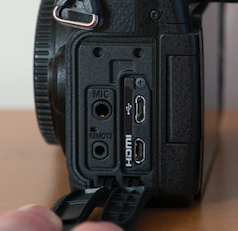
Also included are a number of microphone settings for the G85 such as the possibility to adjust the sound input in 19 levels (-12dB to +6dB). Sadly, neither camera has a headphone input.
Like the cameras that preceded them, the G85 and GX85 are packed with lots of extra video-related options. In addition to Stop Motion Animation and Time-Lapse (both of which can be saved as 4K video files), you can also find a 4K Live Cropping mode that creates digital movements by cropping the 4K resolution and saving it as a Full HD file, as well as Snap Movie which records 2, 4, 6 or 8 second clips with a ‘pull focus’ or ‘colour fade’ effect.
The only video feature that doesn’t live up to my expectations is once again the continuous AF, especially in comparison to mirrorless models that use contrast and phase detection autofocus like the Sony a6300 or Fujifilm X-T2. It can take the autofocus system quite some time to pass from one focus point to another, or to catch up with the movements of a subject. For this reason, I often end up using single AF or manual focus with Lumix cameras.
4K Photo
4K PHOTO is one of the star features of Panasonic Lumix cameras, which is why I’ve given it a section of its own. It allows you to extract 8MP JPG stills from 4K footage shot at 30fps in-camera.

Unsurprisingly, both cameras come with exactly the same 4K PHOTO modes, which are as follows:
- 4K Burst Mode: Press and hold down the shutter button for the entire duration you wish you capture. Best suited to capturing fast-moving action that only happens for a couple of seconds.
- 4K Burst Start/Stop: Best suited to longer action sequences. Press the shutter once to start recording and again to stop.
- 4K Pre-Burst: The camera pre-records 30 images into the internal memory before you press the shutter button, as well as 30 frames after you press the button, for a total of 60 frames. Helps you capture easy-to-miss moments, even if you don’t press the shutter button in time.
- Post Focus: Lets you select your preferred focus point on-screen after taking the shot.
- Post Focus (with Focus Stacking): Lets you stack the images taken in Post Focus in-camera for more depth of field. (Note that you need to install firmware 1.1 on the GX85 to access this feature.)

- Light Composition: Lets you merge images taken in 4K PHOTO mode into one light composition. Useful for light painting and fireworks.

Although these modes are useful for capturing unexpected moments and fast action, they come with their own set of caveats.
First, since the files are 8MP JPGs, they lack both the resolution of the ordinary 16MP files and the dynamic range of the native RAW files, and cannot be edited as easily in post-production.
Second, you might see evidence of rolling shutter artefacts or banding under artificial light because the stills are extracted from 4K footage that was filmed with the electronic shutter.
On the G85, there is a new option in the Playback menu called 4K Photo Bulk Saving that, as the name suggests, lets you save a batch of 4K Photo images from your footage.
Flash
Both cameras come with a built-in flash. The G85’s is located on top of the fake pentaprism that houses the EVF, while the GX85’s is sandwiched in between the hot shoe and shutter release button.

The specifications are identical: both have a synchronisation speed of less than 1/160 and an output adjustment between -3EV and +3EV in 0.3EV increments. The various modes are as follows: Auto, Auto/Red-eye Reduction, Forced On, Forced On/Red-eye Reduction, Slow Sync., Slow Sync./Red-eye Reduction, and Forced Off.
Be aware that larger lenses can block the light from both built-in flash units, casting a shadow on the subject such as in the case below.
One small yet relevant difference between the two cameras involves wireless flash control. On the G85, you can use the built-in flash to control other compatible units. The built-in flash of the GX85 doesn’t control other units wirelessly, so you must use an optional flash like the DMW-FL200L on the camera’s hotshoe.
Finally, you can gain access to additional features such as High Speed Sync with compatible external flash units such as the Nissin i40.
Extra Features
Beyond the various 4K Photo and video modes mentioned above, Lumix cameras also come loaded with extra features that can make your shooting experience more enjoyable.
First, we have the various bracketing modes. In addition to the standard exposure bracketing, you’ll also find aperture, focus and white balance bracketing. Note that aperture bracketing only works in A mode and WB bracketing won’t work with any of the RAW picture quality modes.
The various Scene Modes are useful if you are just coming to grips with photography, while the Creative Effects filters are a fun way of giving your image a unique look. In both these modes, the camera switches over to automatic, so you cannot adjust any of the exposure settings. On the GX85, the Panorama mode has its own spot on the Mode dial while on the G85, it has been relegated to the Scene Mode menu.
Multiple exposure lets you layer multiple images on top of one another in-camera.

You’ll find a digital teleconverter option on both cameras, whereas only the G85 has a Lens Position Resume option that saves the focus position when you turn off the camera. When a lens that is compatible with power zoom is used, the zoom position is also saved.
Finally, both models come with built-in WiFi capabilities. With it activated, you can connect to your smart device to the camera via the Panasonic Image App and control your camera remotely, transfer images stored in the camera, send images while recording, or playback on the TV. You can establish a connection between the two devices with a QR code.
Battery Life
The larger body and more substantial grip has made room for a larger battery (DMW-BLC12E) on the G85. According to the official specifications, battery can manage 330 shots on a full charge. That of the GX85 (DMW-BLG10E) is smaller and doesn’t last quite as long (around 290 shots), though either can get you through a day of non-intensive shooting.
Of course, by using more power-hungry features such as 4K video or burst shooting, you will exhaust the battery life more quickly than if you just shoot stills. To get more out of the battery, you can reduce the brightness/luminance of the monitor or enter the Economy menu to shorten the time it takes for the camera to deactivate the monitor/EVF or enter Sleep Mode.
While the GX85’s battery can be charged via USB, the G85 requires a separate external charger. This makes the GX85 a little easier to charge when you don’t have access to a socket, as you can plug it into your car’s cigarette lighter or use an external charger like the Anker Mini. However, the USB method of charging the battery seems to take longer.
Panasonic also announced the DMW-BGG1 Battery Grip for the G85 that can house two batteries to prolong the total battery life of the camera when shooting video or bursts. It provides extra exposure control dials, a shutter release, AF/AE lock buttons and an exposure compensation dial. Within the G85 menu, you can choose between using the grip battery first, or the in-body battery.
Price
In a world where the average price of mid-to-high end mirrorless cameras is now well over the $1000 mark, the G85 and GX85 are simultaneously a breath of fresh air and a reminder that you can still buy a very capable camera at a reasonable price.
For the body alone, you can currently find the older GX85 for just under $700, or close to $800 with the 12-32mm kit lens. The G85 comes in a little higher at around $900 for the body and just shy of $1000 with the 12-60mm kit lens.
Conclusion
The fact that nothing but the letter ‘X’ separates the G85 and GX85 isn’t a coincidence. After all, despite appearances, the two cameras are much more alike than they are different.
From the point of view of image quality and performance, there really is very little to compare since they utilise the same 16MP sensor, Depth from Defocus contrast detection autofocus and image stabilisation system. Even the 4K video quality is identical, though the G85 does come with a few additional features designed specifically for video shooting, such as two CineLike profiles, a microphone input along with extra microphone-related options and a multi-angle screen, to name a few.
In the end, it all comes down to the design: those who require excellent ergonomics, a bright and fluid EVF, and weather-sealing will prefer the G85, while those in need of a discreet and portable body will be drawn to the GX85.
Choose the Lumix G85 if you:
- require comfortable SLR-like ergonomics
- can benefit from the extra video features such as CineLike profiles and microphone input
- plan on using large lenses like the Leica 100-400mm
- often shoot in inclement conditions
Choose the Lumix GX85 if you:
- prioritise compactness and portability above all else
- prefer a standard tilting screen to a multi-angle type
Check price of the Lumix G85 / G80 on
Amazon | Amazon UK | B&H Photo | eBay
Check price of the Lumix GX85 / GX80 on
Amazon | Amazon UK | eBay | B&H Photo
Second-hand Panasonic cameras on
You are on page 2.
- Page 1: design, functionality and image quality
- Page 2: autofocus, speed, stabilisation, other features and conclusion
Additional Images
Panasonic Lumix G85






Panasonic Lumix GX85







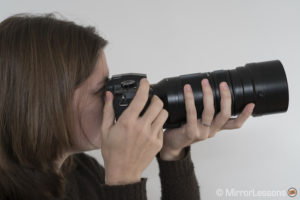
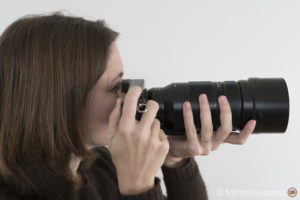
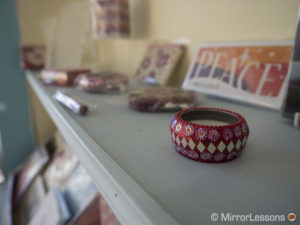
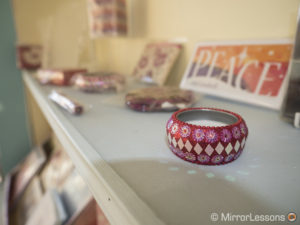





Thanks for another great review. FYI, on the feature summary, you’ll want to swap the “Weather-sealing” notation. The G85 is “Dust and moisture resistant”, not the GX85. Panasonic’s byzantine naming scheme holds back their ability to effectively market their products IMO.
To me, the GH4-G80/G85 comparison would be interesting. I’m selling my GH4 and will be getting a G85. Looks like the G85 is a significantly better stills camera (IBIS, no lowpass filter). Video is a mixed bag. The G85 lacks advanced video functions (VLOG, slow-mo/VFR, headphone jack), but has video IBIS. I do a lot of video, but don’t use these advanced video functions, so the G85 seems like a no-brainer upgrade for my needs.
Ah, thanks for noticing! I’ve switched them around. 🙂
Yes, the IBIS makes a huge difference for both stills and video in our experience. Hopefully the GH5 will have it as well!
Great review, as always. Love your various sites, and the hard work you do on our behalf.
Thank you.
Thanks, Kevin. That’s very kind!
Thanks. A comparison that is a model of clarity.
Thanks, Ziggy 🙂
As ever an excellent and comprehensive comparison. I can’t help wondering however how the m4/3 manufacturers ever hoped to attract point and shoot smartphone users to their cameras when they come up with ‘Depth from Defocus contrast detection autofocus’ The words gook and gobbledy spring to mind!!
Thanks so much, David. 🙂 I honestly wonder how long Panasonic will continue to use DFD technology now that the various hybrid AF systems are proving so much more effective. We shall see!
excellent
Thanks!